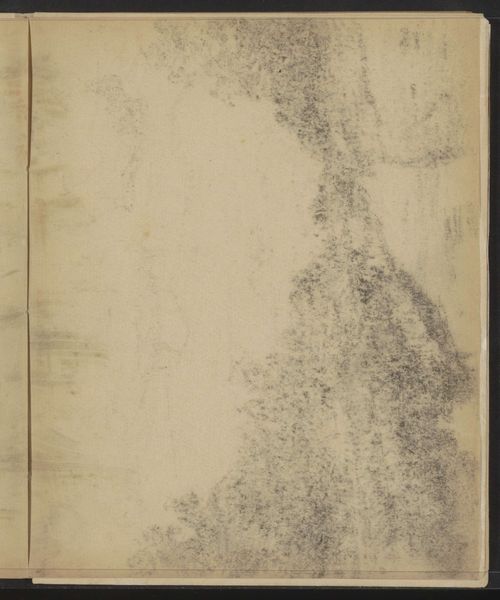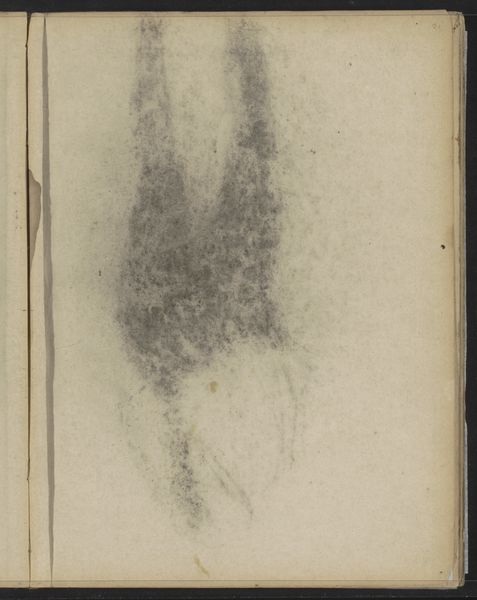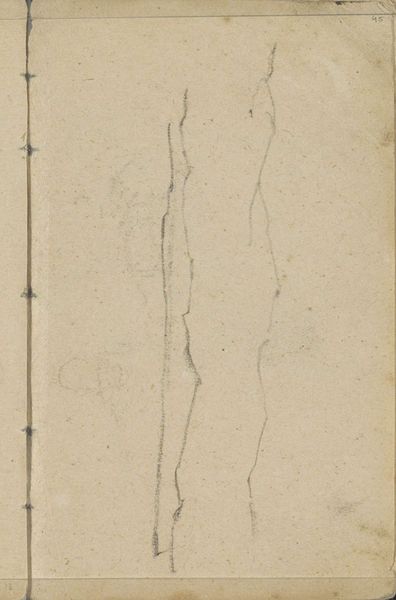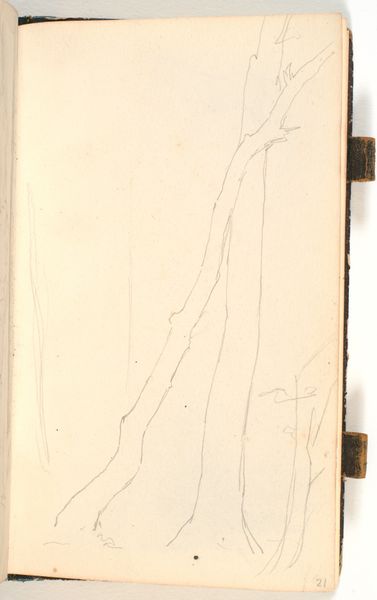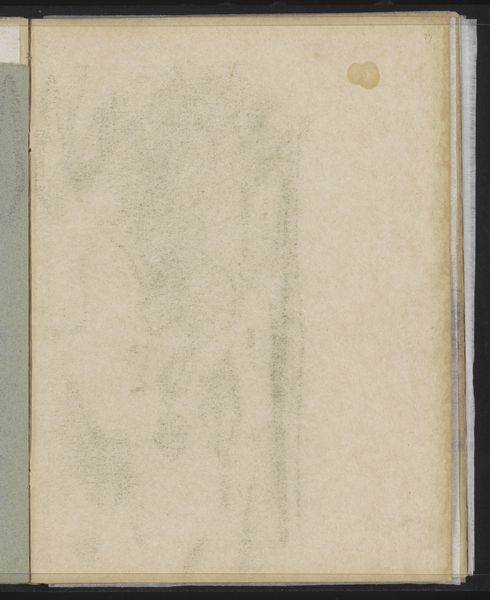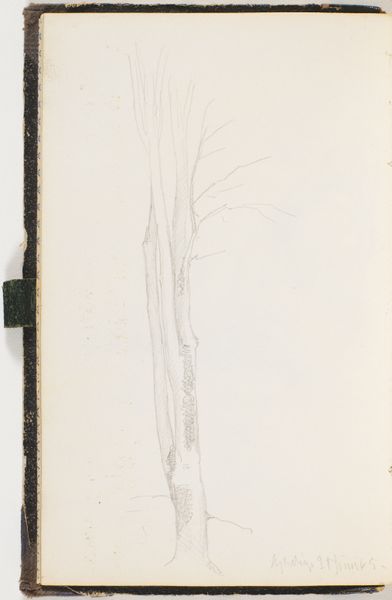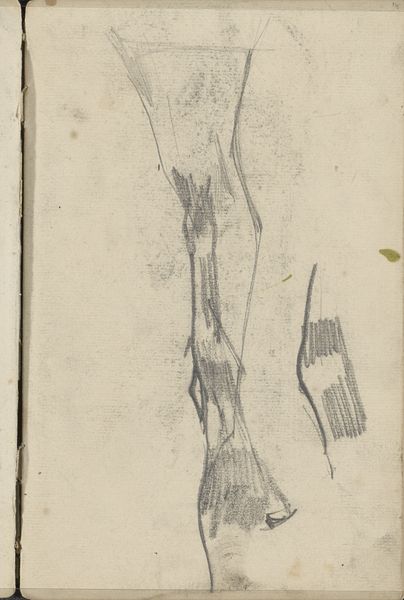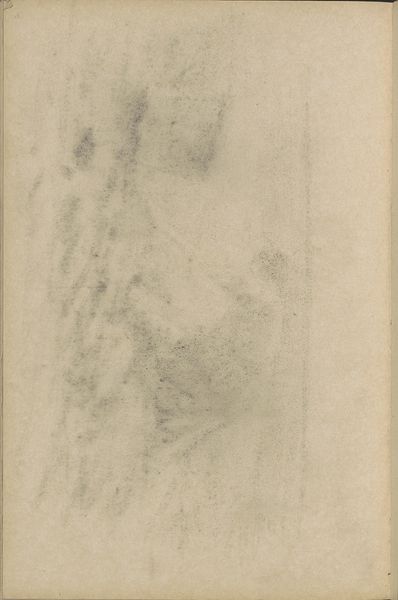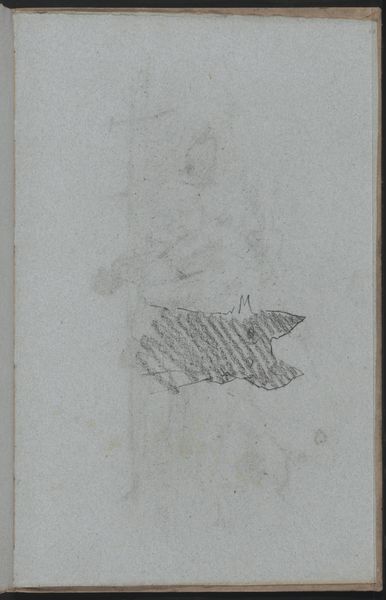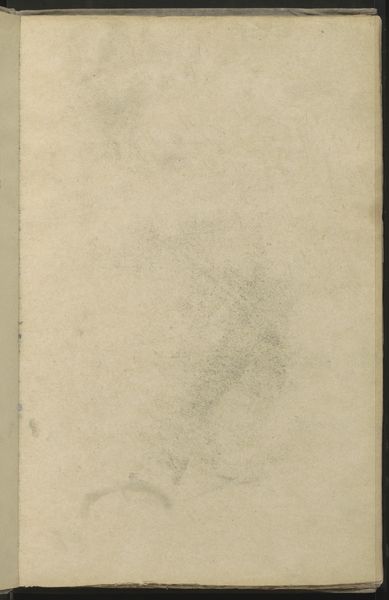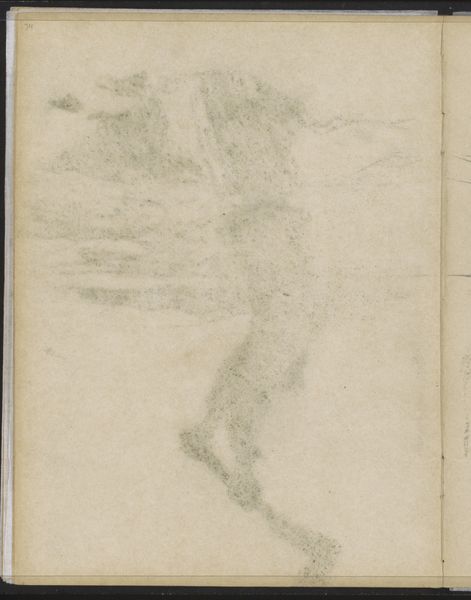
drawing, paper, pencil, graphite
#
drawing
#
organic
#
landscape
#
paper
#
coloured pencil
#
pencil
#
line
#
graphite
#
realism
Dimensions: 150 × 90 mm
Copyright: Public Domain
Editor: This is Hendrik Pieter Koekkoek's "Sketch of Tree Trunk," created around 1877. It’s a graphite, pencil, and colored pencil drawing on paper. It feels very immediate, like a quick study. How do you interpret this work? Curator: On the surface, it's a simple depiction of nature. However, given Koekkoek's context, we might see it as something more. Think about the Romantic era. Nature was often used to symbolize freedom, escape, and the sublime, especially relevant in times of social or political unrest. What kind of statements were artists making about nature versus urban life in the late 1870s? Editor: So, you're saying this isn't just a drawing of a tree; it could be a commentary on industrialization or something? A longing for simpler times? Curator: Exactly. And think about who had access to nature. The burgeoning urban working class were increasingly cut off from it, while the wealthy could retreat to country estates. The tree becomes a symbol of privilege, perhaps even a silent protest. Editor: I hadn't thought about it like that. It's fascinating how a simple drawing can carry such complex meanings! Curator: Precisely. Art isn’t created in a vacuum; it’s a product of its time, reflecting and sometimes challenging prevailing social norms. Editor: I learned a lot about thinking of landscapes beyond just face value today, thanks! Curator: Me too!
Comments
No comments
Be the first to comment and join the conversation on the ultimate creative platform.

